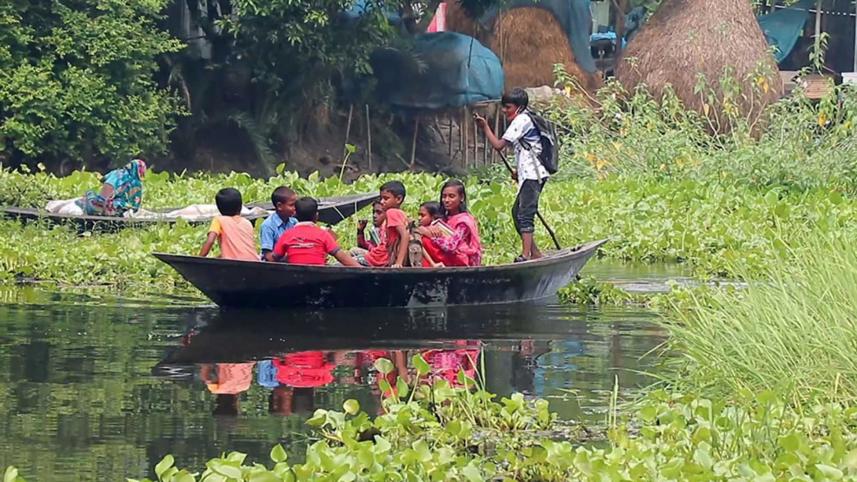Schools in rural areas need urgent govt assistance

The dire condition of the Dayarampur Government Primary School at Dayarampur village, under Haripur union of Pabna's Chatmohar upazila, is worrisome and it represents the state of many other schools across Bangladesh. The school has been in operation since 1991, with the current headcount of students being 154. It was only nationalised in 2017, but has seen no development since then. Due to being situated in the middle of Chalanbeel, it is already inaccessible, except by boat, for a few months every year. During other times, the students must reach the mere 40-feet-long tin-shed establishment on muddy paths. The school often teaches students of multiple grades in one room, and also has no toilet available for use.
It was only in September that schools finally reopened for physical classes across the country, after being closed for a year and a half due to the Covid-19 pandemic. An analysis by Unicef in August found that over 40 million Bangladeshi students from pre-primary to higher education levels had been adversely affected by this prolonged closure. While children from urban and semi-urban areas were still able to somewhat access education through digital learning materials and online classes during this time, it was the children in remote areas who fell victim to severe learning loss, child labour, and/or child marriage.
The authorities' lack of care for schools such as the Dayarampur Government Primary School represent a bigger picture of how the education sector is not prioritised, time and again. A glaring example of this is that, despite the impact the pandemic has had on this sector, of the total proposed national budget for 2021-22 fiscal year, only 11.9 percent was allocated to education. This is even lower than the 12.3 percent in the revised budget for 2020-21 fiscal year.
If the government is paying no heed to the development of schools in remote areas, how are students supposed to feel encouraged to study there? Given the recent surge in unemployment and increase in poverty, parents in poorer districts are already demotivated to send their children back to school. If schools themselves are also kept inaccessible, there is a high possibility that the country will see even greater numbers of dropouts.
We hope that the plan to allot Tk 3 lakh this fiscal year for administering urgent repair work of the Dayarampur school will be seen through. But we must also urge the government to not neglect schools in remote areas—and the education sector as a whole—now that they need authoritative support the most. The effects of such continued neglect may not seem urgent now, but will reverberate throughout the next few decades.



 For all latest news, follow The Daily Star's Google News channel.
For all latest news, follow The Daily Star's Google News channel.
Comments